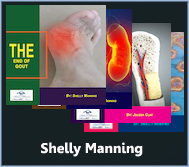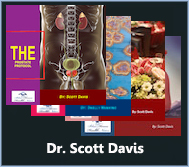 Basically, the advice they give every patient for every disease…I worried constantly about how bad my fatty liver might become. How it might slowly progress into something far more serious. Because whatever caused my fatty liver was only going to make it worse if I didn’t do something about it.Given the lack of help from the medical profession, the question is, do what about it? And the answer? It’s here. Take a look in the short video
Basically, the advice they give every patient for every disease…I worried constantly about how bad my fatty liver might become. How it might slowly progress into something far more serious. Because whatever caused my fatty liver was only going to make it worse if I didn’t do something about it.Given the lack of help from the medical profession, the question is, do what about it? And the answer? It’s here. Take a look in the short video
Click to see more detail on Video
What causes a fatty liver in a woman?
Fatty liver disease, also known as hepatic steatosis, can have various causes in women. The two main types of fatty liver disease are non-alcoholic fatty liver disease (NAFLD) and alcoholic fatty liver disease (AFLD). Here’s an overview of the common causes of each type in women:
- Non-alcoholic fatty liver disease (NAFLD):
- Obesity: Excess body weight, particularly abdominal obesity, is a significant risk factor for NAFLD in both men and women. Fat accumulation in the liver can occur due to insulin resistance and metabolic imbalances associated with obesity.
- Insulin resistance and metabolic syndrome: Insulin resistance, a condition in which cells become less responsive to insulin, and metabolic syndrome (a cluster of conditions including high blood pressure, high blood sugar, abnormal cholesterol levels, and excess abdominal fat) are closely linked to NAFLD.
- Type 2 diabetes: Women with type 2 diabetes are at increased risk of developing NAFLD due to insulin resistance and metabolic disturbances.
- Polycystic ovary syndrome (PCOS): PCOS is a common hormonal disorder in women of reproductive age and is associated with insulin resistance and obesity. Women with PCOS may have an increased risk of developing NAFLD.
- Menopause: Changes in hormone levels during menopause may contribute to alterations in fat metabolism and increase the risk of NAFLD in some women.
- Sedentary lifestyle: Lack of physical activity and sedentary behavior can exacerbate metabolic imbalances and increase the risk of NAFLD in women.
- Alcoholic fatty liver disease (AFLD):
- Excessive alcohol consumption: Chronic and excessive alcohol consumption is the primary cause of AFLD in both men and women. However, women may be more susceptible to the harmful effects of alcohol on the liver due to differences in body composition, metabolism, and hormonal factors.
- Gender differences: Women tend to develop AFLD at lower levels of alcohol consumption compared to men, partly due to differences in alcohol metabolism and hormonal factors.
- Nutritional factors: Inadequate intake of essential nutrients, such as protein and antioxidants, can exacerbate the effects of alcohol on the liver and increase the risk of AFLD in women.
It’s important to note that fatty liver disease can progress from simple steatosis (accumulation of fat) to more severe forms, such as non-alcoholic steatohepatitis (NASH), fibrosis, cirrhosis, and liver cancer. Early detection and intervention are crucial for preventing disease progression and minimizing the risk of complications. If you’re concerned about fatty liver disease or its risk factors, consult with a healthcare provider for proper evaluation, diagnosis, and management.
Can you live 20 years with fatty liver?
The prognosis for individuals with fatty liver disease can vary widely depending on factors such as the underlying cause of the disease, the presence of other medical conditions, lifestyle factors, and the degree of liver damage or inflammation. While some people may have relatively mild fatty liver disease that does not progress significantly over time, others may experience disease progression, complications, or worsening of liver function.
In general, non-alcoholic fatty liver disease (NAFLD) is considered to have a relatively favorable prognosis compared to alcoholic fatty liver disease (AFLD) or non-alcoholic steatohepatitis (NASH), which is a more severe form of NAFLD characterized by liver inflammation and damage. NAFLD often progresses slowly over many years, and many individuals with NAFLD may not develop significant liver-related complications.
However, for some individuals, NAFLD or NASH can progress to more advanced stages of liver disease, such as fibrosis, cirrhosis, or liver cancer, particularly if risk factors such as obesity, diabetes, or metabolic syndrome are not addressed. These advanced stages of liver disease can increase the risk of complications such as liver failure, portal hypertension, and hepatocellular carcinoma (liver cancer).
It’s important to note that fatty liver disease is a potentially serious condition that requires medical monitoring and management to prevent disease progression and reduce the risk of complications. Lifestyle modifications, including weight loss, regular exercise, and a healthy diet, are often recommended as first-line treatments for NAFLD and NASH. In some cases, medications or interventions to address underlying risk factors or liver inflammation may be recommended.
If you have been diagnosed with fatty liver disease, it’s important to work closely with your healthcare provider to develop a personalized treatment plan and receive regular monitoring to assess liver function and disease progression. With appropriate management and lifestyle modifications, many individuals with fatty liver disease can live relatively normal lives and may not experience significant liver-related complications for many years. However, the prognosis can vary from person to person, and early detection and intervention are key to optimizing outcomes.
Can your liver heal from fatty liver?
Yes, the liver has the ability to heal from fatty liver disease, especially in the early stages and with appropriate lifestyle modifications. Fatty liver disease encompasses a range of conditions characterized by the accumulation of excess fat in liver cells. The two main types are non-alcoholic fatty liver disease (NAFLD) and alcoholic fatty liver disease (AFLD).
Here’s how the liver can heal from fatty liver disease:
- Lifestyle modifications: Making changes to your lifestyle is often the first line of treatment for fatty liver disease. These changes may include:
- Weight loss: Losing weight, particularly if you are overweight or obese, can reduce fat accumulation in the liver. Even modest weight loss (5-10% of body weight) can lead to improvements in liver function.
- Healthy diet: Adopting a balanced diet that is low in saturated fats, refined carbohydrates, and added sugars can help improve liver health. Focus on consuming plenty of fruits, vegetables, whole grains, lean proteins, and healthy fats.
- Regular exercise: Engaging in regular physical activity can help reduce liver fat, improve insulin sensitivity, and promote overall health. Aim for at least 150 minutes of moderate-intensity aerobic exercise or 75 minutes of vigorous-intensity exercise per week.
- Limit alcohol consumption: If you have AFLD or NAFLD, it’s important to limit or avoid alcohol consumption to prevent further liver damage.
- Treatment of underlying conditions: If you have underlying conditions such as obesity, type 2 diabetes, insulin resistance, or high cholesterol, managing these conditions effectively is essential for improving liver health and reducing the risk of fatty liver disease progression.
- Medications: In some cases, medications may be prescribed to manage specific aspects of fatty liver disease. For example, medications that improve insulin sensitivity or lower blood lipid levels may be recommended.
- Avoidance of liver-damaging substances: Avoiding exposure to substances that can harm the liver, such as certain medications, environmental toxins, and excessive alcohol, can help promote liver healing.
- Regular monitoring: Regular follow-up appointments with your healthcare provider are important for monitoring liver function, assessing disease progression, and adjusting treatment as needed.
It’s important to note that the extent of liver healing and the potential for reversal of liver damage depend on factors such as the underlying cause of the fatty liver disease, the degree of liver damage, and individual factors such as age and overall health. In some cases, particularly in advanced stages of liver disease, complete reversal of liver damage may not be possible. However, adopting a healthy lifestyle and receiving appropriate medical care can help slow disease progression, reduce complications, and improve quality of life.
How can I reverse my fatty liver?
Reversing fatty liver disease involves adopting lifestyle changes and receiving appropriate medical care to improve liver health and reduce fat accumulation in the liver. Here are several strategies that can help reverse fatty liver:
- Healthy diet: Adopting a balanced and nutritious diet is crucial for reversing fatty liver disease. Focus on consuming plenty of fruits, vegetables, whole grains, lean proteins, and healthy fats. Limit your intake of saturated fats, trans fats, refined carbohydrates, and added sugars. Consider working with a registered dietitian to develop a personalized meal plan that meets your nutritional needs and supports liver health.
- Weight loss: If you are overweight or obese, losing weight can significantly improve liver health and reduce fat accumulation in the liver. Aim for gradual, sustainable weight loss through a combination of dietary changes, regular exercise, and lifestyle modifications. Even modest weight loss (5-10% of body weight) can lead to improvements in liver function and reduce liver fat content.
- Regular exercise: Engaging in regular physical activity is essential for reversing fatty liver disease. Aim for at least 150 minutes of moderate-intensity aerobic exercise or 75 minutes of vigorous-intensity exercise per week, as recommended by guidelines. Exercise can help reduce liver fat, improve insulin sensitivity, and promote overall health.
- Limit alcohol consumption: If you have alcoholic fatty liver disease (AFLD) or non-alcoholic fatty liver disease (NAFLD), it’s important to limit or abstain from alcohol consumption to prevent further liver damage and promote liver healing.
- Treatment of underlying conditions: If you have underlying conditions such as obesity, type 2 diabetes, insulin resistance, or high cholesterol, managing these conditions effectively is essential for improving liver health and reversing fatty liver disease. Work with your healthcare provider to develop a comprehensive treatment plan that addresses all relevant medical conditions.
- Avoid liver-damaging substances: Avoid exposure to substances that can harm the liver, such as certain medications, environmental toxins, and excessive alcohol. Be cautious when taking over-the-counter medications, supplements, or herbal remedies, and always consult with your healthcare provider before starting any new treatment.
- Medications: In some cases, medications may be prescribed to manage specific aspects of fatty liver disease, such as insulin sensitizers or lipid-lowering medications. These medications should be used under the guidance of a healthcare provider and as part of a comprehensive treatment plan.
- Regular monitoring: Regular follow-up appointments with your healthcare provider are essential for monitoring liver function, assessing disease progression, and adjusting treatment as needed. Your healthcare provider may recommend periodic blood tests, imaging studies, or liver biopsy to evaluate liver health and assess for complications.
It’s important to note that the effectiveness of treatment and the potential for reversing fatty liver disease depend on factors such as the underlying cause of the disease, the degree of liver damage, and individual factors such as age and overall health. With appropriate lifestyle modifications, medical care, and regular monitoring, many individuals can successfully reverse fatty liver disease and improve liver health. If you’ve been diagnosed with fatty liver disease, work closely with your healthcare provider to develop a personalized treatment plan tailored to your specific needs and goals.
 Basically, the advice they give every patient for every disease…I worried constantly about how bad my fatty liver might become. How it might slowly progress into something far more serious. Because whatever caused my fatty liver was only going to make it worse if I didn’t do something about it.Given the lack of help from the medical profession, the question is, do what about it? And the answer? It’s here. Take a look in the short video
Basically, the advice they give every patient for every disease…I worried constantly about how bad my fatty liver might become. How it might slowly progress into something far more serious. Because whatever caused my fatty liver was only going to make it worse if I didn’t do something about it.Given the lack of help from the medical profession, the question is, do what about it? And the answer? It’s here. Take a look in the short video
Click to see more detail on Video





